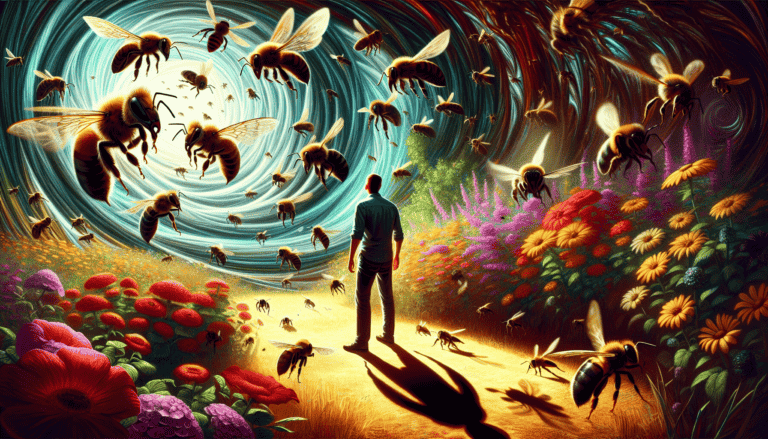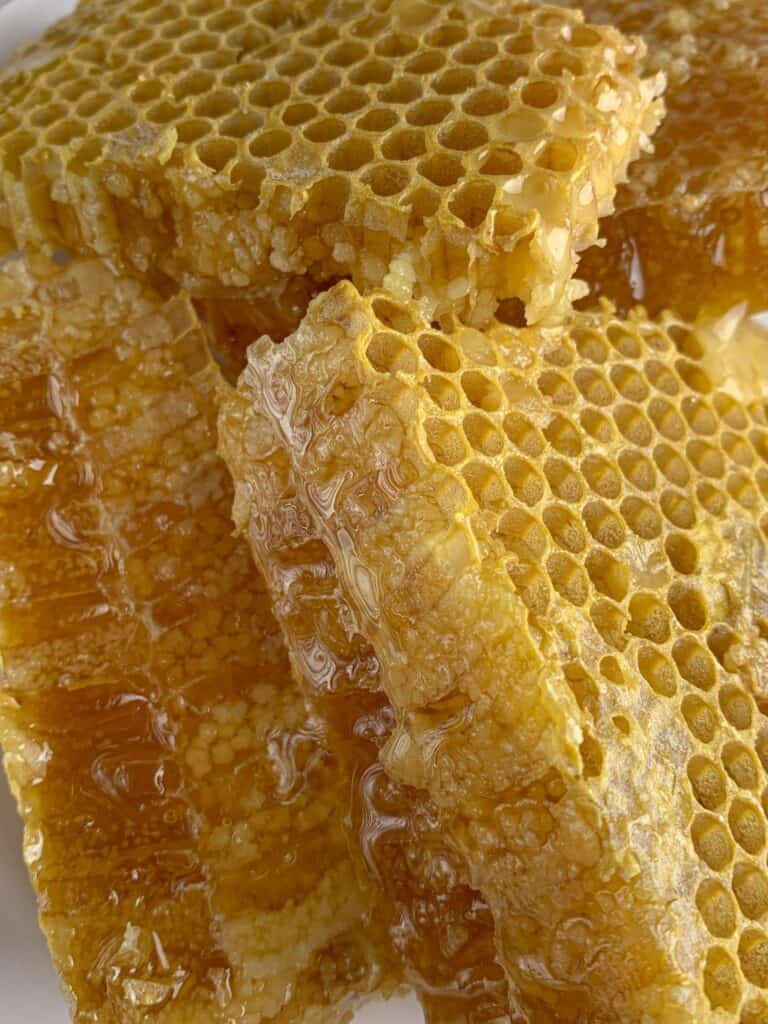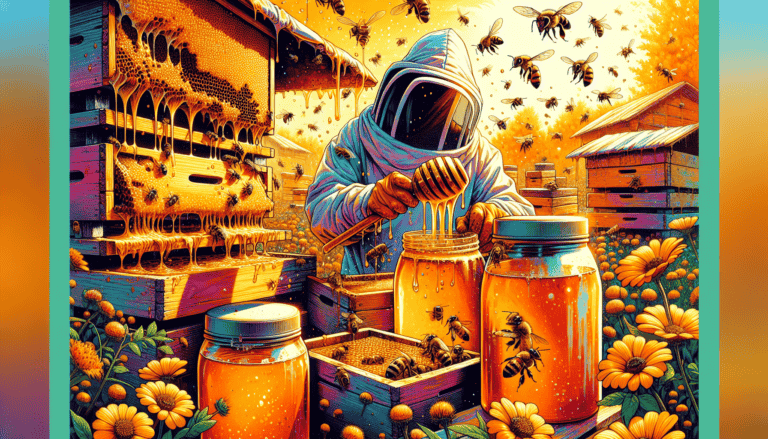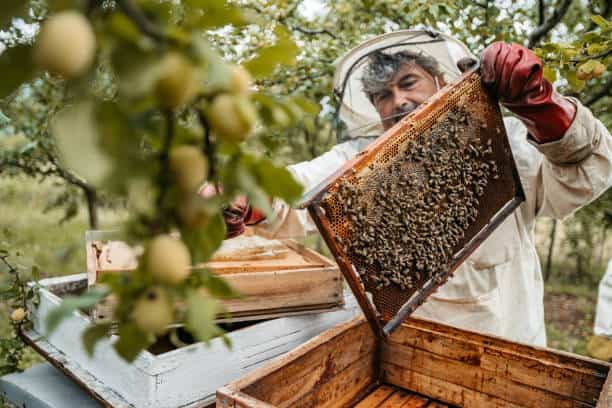How to Distinguish Different Kinds of Bees: A Simple Guide
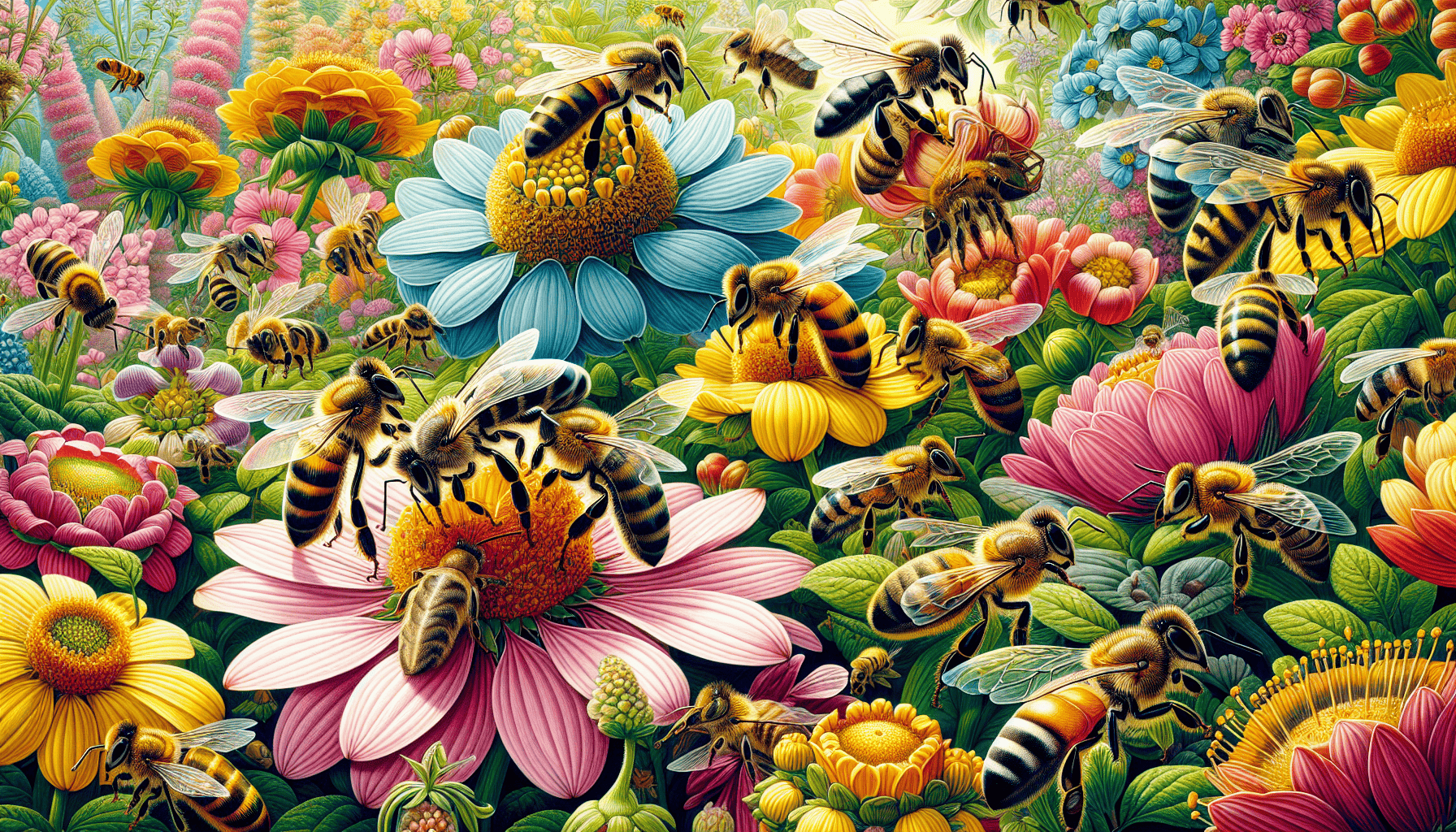
Understanding how to differentiate various bee types is crucial for both safety and preservation efforts. This manual will instruct you on the identification of common species such as honey bees, bumble bees, and carpenter bees, among others. By familiarizing yourself with their distinct characteristics and patterns of activity, you will become more adept at acknowledging and safeguarding these essential pollinators.
Key Takeaways
Bees can be distinguished from wasps by their broader bodies, hairy appearance, coloration, and nesting habits.
Honey bees are vital pollinators, known for building organized nests and producing honey, while bumble bees and carpenter bees exhibit unique nesting behaviors and physical characteristics.
Conservation efforts for various bee species, including solitary and rare bees, are crucial for maintaining biodiversity and supporting agricultural productivity.
Key Differences Between Bees and Wasps
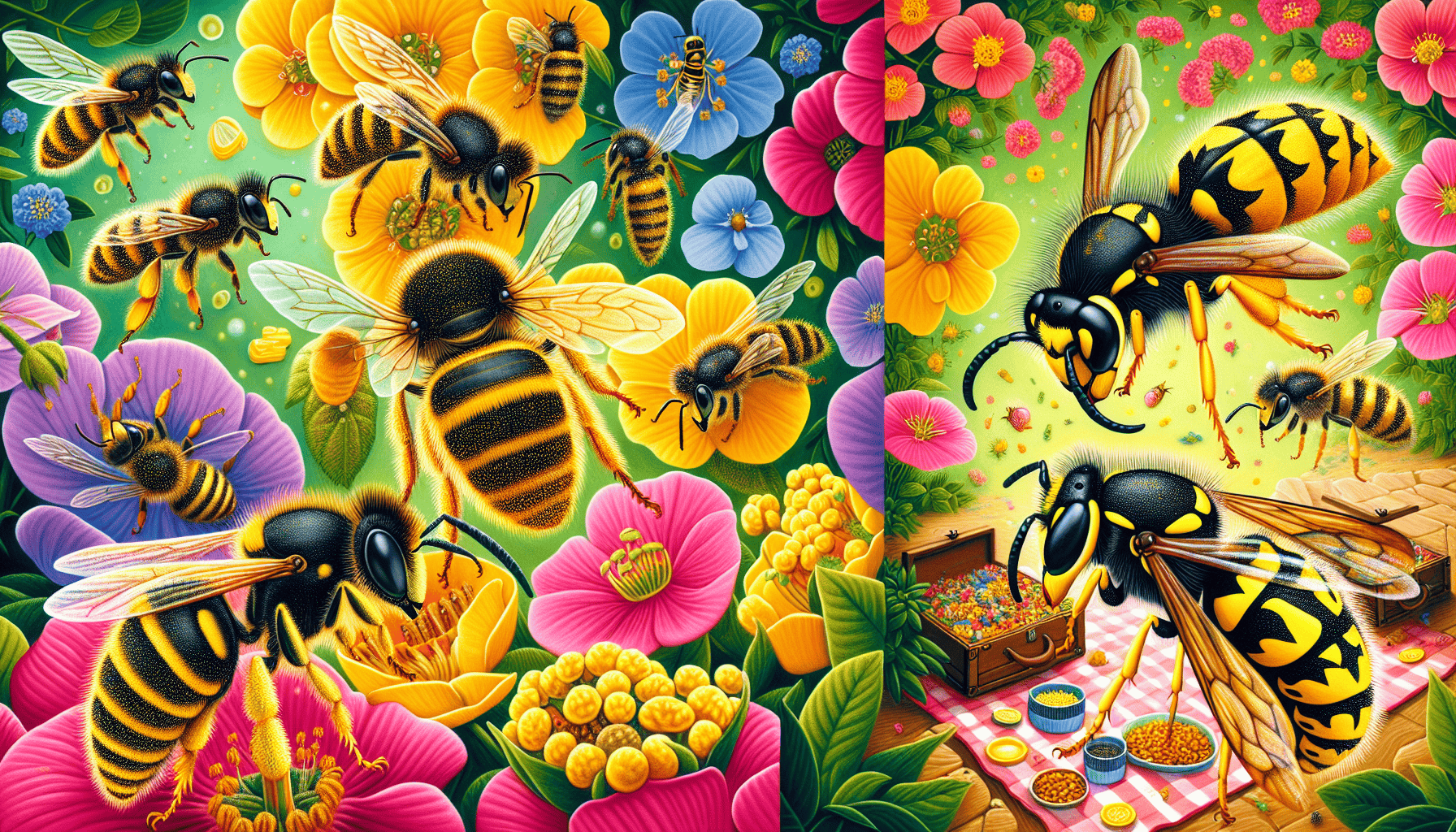
To recognize the variety among bee species, one must differentiate them from wasps, which are often mistakenly thought to be similar. Wasps can be identified by their thin waists connecting the abdomen and thorax, whereas bees have a fuller and more rounded body shape. This structural distinction is key in recognizing bees.
In terms of appearance and behavior, another notable contrast emerges. Bees typically exhibit hairy bodies that help them collect pollen, while wasps possess smooth exteriors. The hairiness of bees facilitates the transportation of pollen as opposed to the sleek build of wasps which suits their lifestyle as hunters or scavengers.
The color patterns also distinguish between these insects. Wasps display stark black and yellow stripes that signal danger due to their inclination toward aggression. On the other hand, most bees wear softer shades like light brown or golden-brown hues — though it’s worth noting that Africanized honeybees deviate from this norm with a heightened defensive nature.
Last but not least, different nesting preferences offer additional identification clues between these two insect types. While many bee varieties make homes in wooden settings such as tree trunks or underground gaps. Conversely, wasp nests tend towards umbrella-shaped structures crafted out of chewed wood fibers mixed with saliva—highlighting each insect’s distinct contribution within our environment.
Identifying Honey Bees (Apis mellifera)

Apis mellifera, commonly known as honey bees, stand out for their signature appearance among the bee species. These insects often display a reddish-brown hue with distinctive black stripes and bands of orange-yellow on their abdomens. The western honey bee, which is a subspecies of Apis mellifera, features golden brown colors mixed with black striping patterns. Within this same species exists the africanized honey bee along with the european honey bee variant.
The intricate nesting practices of worker honeybees are quite remarkable. They establish nests within protected areas such as hollowed trees or man-made beehives to safeguard against predatory threats and adverse weather conditions. Their homes are not only carefully constructed, but also serve as central command centers for the highly structured communities they form.
Acknowledging that honey bees play an indispensable role in pollination and creating honey is crucial to understanding these creatures’ impact on agriculture and wild plant life alike. As efficient pollinators, they greatly enhance crop yields and floral growth around them—making it important to recognize both their unique characteristics and behaviors in order to fully value their critical contribution to our environment’s biodiversity.
Recognizing Bumble Bees (Genus Bombus)
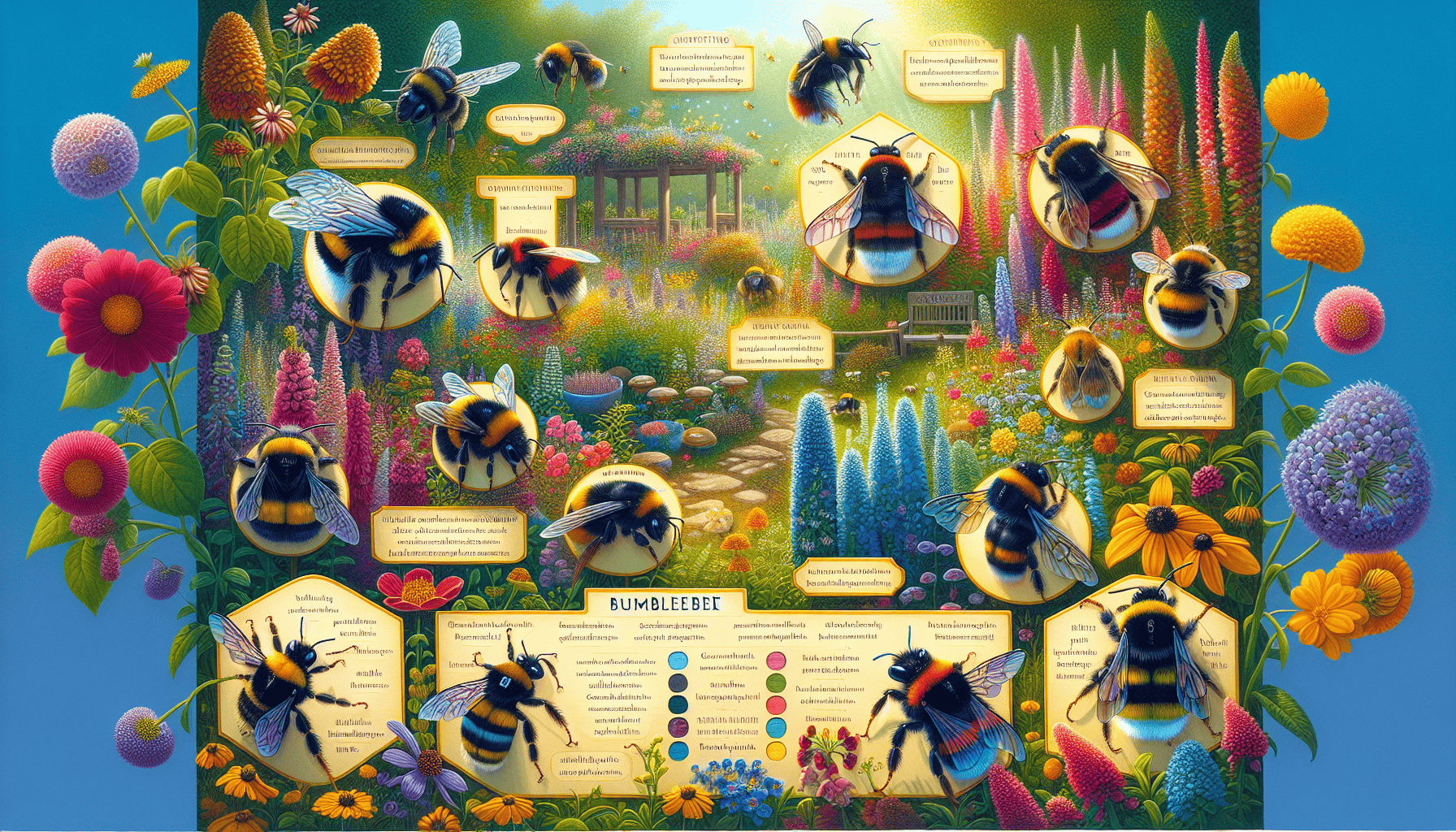
Bumble bees, part of the Bombus genus, are easily identifiable by their sizable and fuzzy appearance. They play a vital role in pollination processes. The United States alone is home to around 49 native bumblebee species that can be recognized by their striking black and yellow coloring, though some may also have splashes of orange or red.
The furry coats on bumblebees significantly boost their pollinating capabilities. Take the Common Eastern Bumble Bee as an example. It wears golden fur over its thorax with a black-brown base coloration. Meanwhile, Garden bumblebees typically exhibit three bright lemon-yellow bands against a contrasting black backdrop.
When it comes to nesting habits, these creatures usually favor subterranean locations such as abandoned burrows from other animals or surface indentations for constructing nests. Alternatively, they might opt for naturally occurring spaces beneath tree roots or within pre-existing man-made structures. Within these habitats exists a basic societal hierarchy composed of queens who rule the nest supported by worker bees and male drones.
Undoubtedly essential contributors to agriculture through their robust capability for plant fertilization—bumblebees are pivotal in crop production across states like California where key crops include avocados, tomatoes, cherries, blueberries, apples, among others. Their influence extends beyond just farming, playing critical roles sustaining biodiversity throughout various ecosystems.
Spotting Carpenter Bees (Genus Xylocopa)
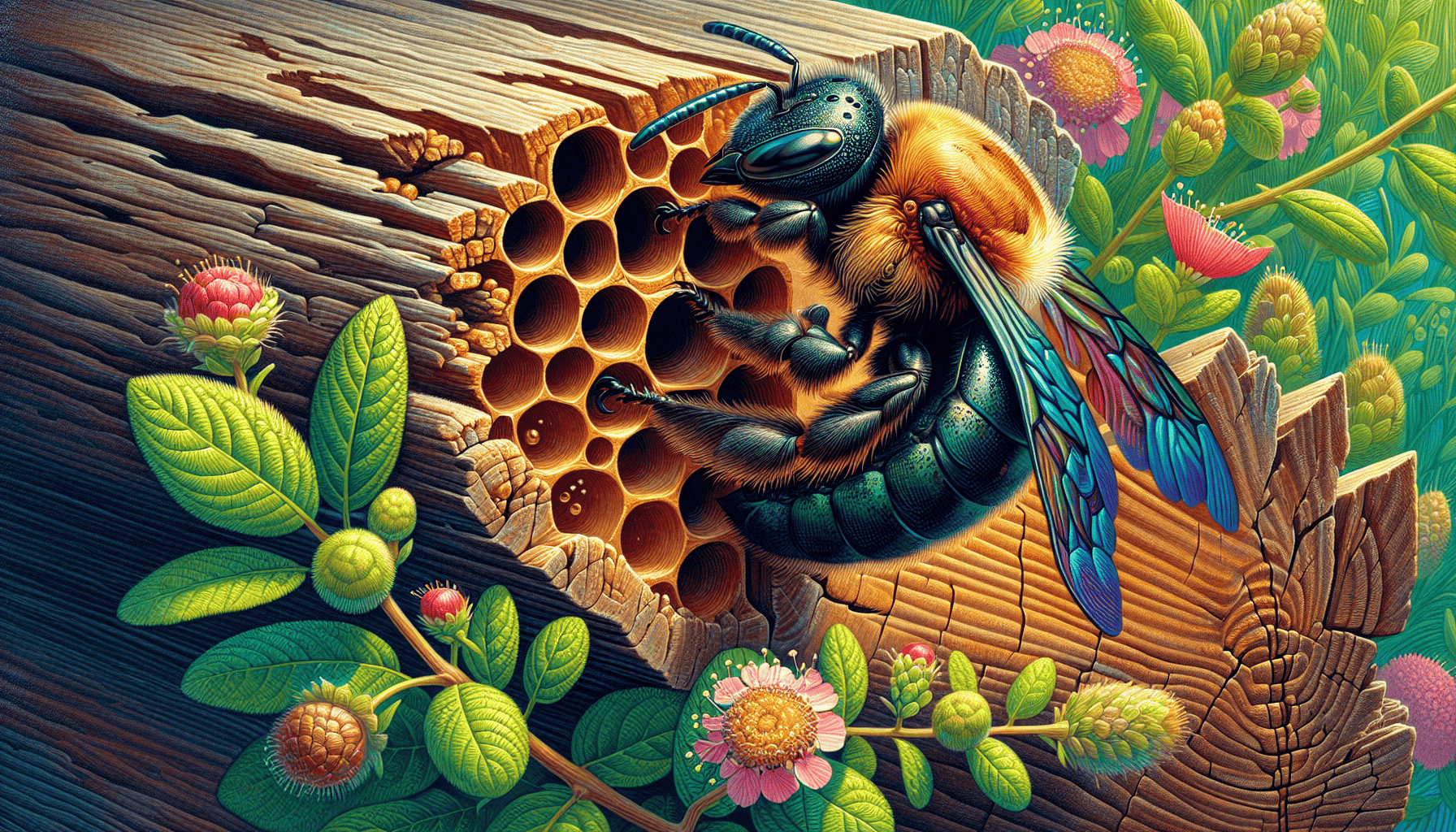
From the Xylocopa genus, carpenter bees are easy to distinguish from bumble bees because of their shiny abdomens. These insects often exhibit black bodies with a thick covering of yellow or purely black hair on their heads and thoraxes. Their abdomens Lack hair coverage. Some types display colors ranging from green to purple.
The nesting habits of carpenter bees are particularly noteworthy due to their ability to bore almost perfect circular openings in wood for nest entrances. These entryways measure about 16 mm across and can be clearly recognized as crafted by these bees. Within the nest itself, they construct individual brood cells separated by partitions made out of chewed wood particles.
In terms of habitat creation, these creatures favor boring into sturdy materials such as wood or bamboo for establishing nests. While this behavior is indeed interesting biologically, it also poses risks since it can cause damage over time to wooden constructs thereby posing issues for property owners.
Being aware of how carpenter bees look and understand where they live is crucial not only when trying to identify them apart from other bee species, but also important in considering how best handle any potential complications that arise concerning humanmade structures due directly impact made by said insect activity.
Identifying Solitary Bees
Solitary bees constitute the most numerous group within bee species and are integral to pollination processes. These types of bees do not live in colonies like their social counterparts, but rather each female solitary bee independently constructs and stocks her own nest without assistance from worker bees.
These independent pollinators make homes either underground or within various natural cavities such as hollow stems or dead wood. Appreciating the distinctive features and nesting habits of these solitary bees is vital for both fostering their preservation and comprehending their essential role in our ecosystems.
We shall delve into three particular varieties of solitary bees: mason bees, leafcutter bees, and mining bees in this segment. Each category demonstrates unique qualities and patterns that contribute significantly to their status as intriguingly effective agents of plant pollination.
Mason Bees (Genus Osmia)
Mason bees, which are members of the Osmia genus, can be recognized by their small size and swift flight patterns. They exhibit a variety of metallic hues including dark blue, greenish-black to dull green. Some may even display shades of red or rust coloration. In contrast to other bee species, mason bees lack specialized structures known as pollen baskets for carrying pollen.
These industrious insects become active in early spring – often seen buzzing about when warm days arrive in January with temperatures around 52 to 55 degrees Fahrenheit. Mason bees usually make nests within existing holes and utilize mud to seal these structures after laying eggs designated for female offspring first and provisioning them with nectar.
Native to Europe, mason bees serve an essential function in pollinating trees that bloom in springtime, such as almonds, apples, pears and others. Their distinct nesting behaviors coupled with their tendency toward early-season activity render them invaluable agents of pollination during this critical period for fruit-bearing flora.
Leafcutter Bees (Genus Megachile)
Belonging to the genus Megachile, leafcutter bees are recognized by their black coloration adorned with white hairs on both the thorax and abdomen. The common name ‘leafcutter bee’ is derived from their distinctive habit of snipping fragments off leaves to construct and seal their nests. Although equipped with a stinger, these bees exhibit non-aggressive behavior towards nest defense which makes them less of a threat when being observed.
Remarkably efficient pollinators, even though they are small in size, one single leafcutter bee can perform the equivalent pollination work of 20 honey bees. For gardeners who wish to manage the presence of leafcutter bees among plants, it’s recommended that damaged stems should be pruned or vulnerable foliage should be shielded using cheesecloth coverings. Recognizing how these insects behave as well as understanding their characteristics helps not only appreciate but also successfully navigate living alongside them, especially since they carry pollen which is crucial for plant reproduction.
Mining Bees (Genus Andrena)
Mining bees, which fall under the Andrena genus, are known for their ground-nesting behavior and encompass a diverse range of species. These solitary bees typically emerge and become active in the spring months from March to May.
The female tawny mining bee is an example within this group that constructs individual nests. They use their hind legs as tools to gather pollen efficiently. This particular mining bee sports a distinctive coat with plush reddish-orange hair covering its thorax and paler orange on its abdomen, contrasted by black hues on the underside, face, and legs.
Acknowledging both how these mining bees live — including their unique nesting practices — and identifying them by sight plays an important role in appreciating their contribution to pollination processes and encouraging actions towards preserving these beneficial insects.
Sweat Bees (Various Genera)
Sweat bees are recognized for their diminutive stature and striking, often metallic, hues. These tiny pollinators come in brilliant shades of green or coppery red in males, distinguishing them from others.
These industrious insects prefer to construct their nests within the bare soil or sand that is directly exposed to sunlight. The founding sweat bee female diligently establishes the nest, stocks cells with provisions for her offspring and lays an approximate total of seven eggs per brood. Humans’ perspiration attracts these bees as they seek out its moisture content.
Although capable of stinging, female sweat bees usually exhibit non-aggressive behavior. Their contribution to pollinating a variety of crops such as sunflowers and apples reveals their critical role within our ecological system.
Specialized Pollinators
Bees that are specialized pollinators have developed to exclusively service certain plants, performing essential duties in maintaining biodiversity and the production of food. These specialist bees often outperform generalist pollinators such as honey bees when it comes to the efficacy with which they pollinate their designated plants.
We will examine squash bees and blueberry bees as two instances of these specialized pollinators in this segment. They each possess distinctive traits and exhibit particular behaviors crucial for the successful pollination of the flora dependent on them.
Squash Bees (Genera Peponapis and Xenoglossa)
Bees from the Peponapis and Xenoglossa genera, known as squash bees, are most active during early morning hours to coincide with the blooming of squash flowers. To honey bees, these bees have a higher efficiency in pollinating plants such as squashes, leading to enhanced crop yields.
The female members of this bee species create their nests underground close to where their food is located. Their main periods of activity span from just before sunrise until mid-morning and also around twilight. Squash bees predominantly carry out pollination for Cucurbita genus plants like zucchini, pumpkins, gourds, and various types of squash.
Identifying both behavior patterns and distinct physical features related to squash bees can deepen understanding about their critical role in effective plant pollination within farming environments while emphasizing the need for efforts directed at preserving them.
Blueberry Bees (Habropoda laboriosa)
The blueberry bee, known scientifically as Habropoda laboriosa, plays a pivotal role in the pollination of blueberry blossoms. This action is vital for increasing both the quality and quantity of fruit produced on blueberry farms.
In the Southeastern region, these bees measure approximately half an inch. Female specimens can range from 0.59 to 0.63 inches in length. They are most active during the bloom period of blueberries, which guarantees effective pollination for these crops.
Acknowledging how essential blueberry bees are to farming underscores the necessity of promoting their conservation and safeguarding their habitats to support sustainable agriculture practices.
Nocturnal and Rare Bees
Diving into the intriguing universe of bees, we encounter species that have adopted a nocturnal lifestyle. These bees, which are part of families such as Andrenidae, Colletidae, Halictidae, and Apidae, take to the skies under the cover of darkness. This behavior allows them to steer clear of predators and make use of flowers that open only at night.
This portion will delve into the specialized adaptations and ecological contributions made by these nighttime foragers before examining some uncommon bee species. We’ll also discuss the obstacles these rarer breeds must overcome in our modern environment.
Nocturnal Bees
Roughly 250 bee species have been identified as operating during night hours or periods of limited light, including twilight-active types. Among them, the Indian Carpenter bee is unique. It’s recognized as the only species capable of navigating and foraging in absolute darkness.
These nocturnal bees are distinguished by their comparatively larger ocelli, which gives them an edge to perceive their surroundings when there’s little illumination, unlike their day-active counterparts. Their natural habitats are typically warm tropical zones or dry landscapes where they benefit from the high nighttime temperatures to continue with their activities.
Their evolutionary choices allow these bees to take advantage of flowers that emerge after dusk and face less competition for resources like food and mates. Appreciating these adaptive features throws a spotlight on the vast diversification within bee populations.
Rare Bees
Several bumblebee species are experiencing a decrease in numbers due to the loss of natural habitat, use of pesticides, and changing climate conditions. Notably endangered is the Royal Lady bee, which can be identified by its brown body featuring golden stripes and reddish-brown appendages.
Native to Australia’s northeastern coastlines, Sugarbag Bees predominantly gather food from indigenous plants as well as fruit trees and exotic flora found within gardens. Contrary to what their title suggests, Royal Lady bees show no signs of aggression nor do they provide their offspring with direct nourishment.
It is essential for conservation efforts to acknowledge both the plight these rare bees face and their unique characteristics. Safeguarding their living environments while mitigating external hazards supports our aim in maintaining the rich variety among bee populations.
How to Attract Different Types of Bees
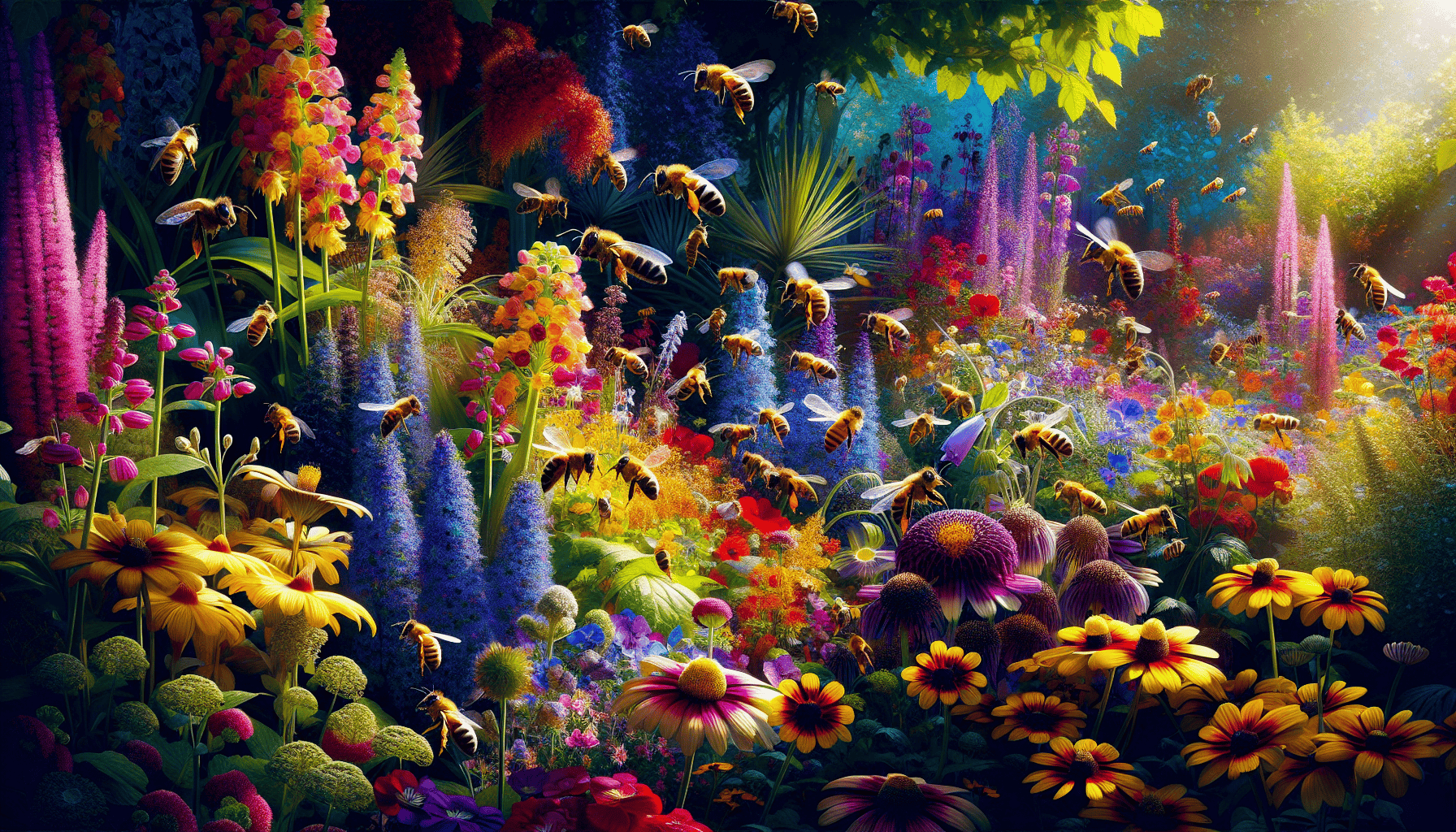
Establishing a garden that is conducive to the well-being of bee populations can be highly beneficial, not only for the bees themselves, but also for boosting pollination. To this end, one should focus on incorporating indigenous plants and wildflowers which are known to attract bees – these insects have shown an affinity for blooms in hues of white, yellow, purple and blue.
To improve accessibility for bees seeking nectar, opt for flowers with simple flat blossoms. Since red is outside their color perception range and thus less attractive to them as potential food sources, choosing against it would make your garden more inviting to these essential pollinators. Providing a diverse array of plant species that flower at various times across different seasons will offer sustenance to bees year-round during their periods of activity.
For solitary bee species looking for nesting sites within your garden, setting up shelters made from natural materials — commonly referred to as “bee hotels” — can act as an incentive. It’s equally important to provide accessible clean water by placing shallow containers filled with pebbles where they may land safely while drinking.
Adopting such measures results in creating a dynamic sanctuary favorable not just toward sustaining robust bee populations, but simultaneously amplifying both aesthetic appeal and fruitfulness within your own slice of nature’s bounty.
Preventing and Managing Bee Encounters
It’s essential to be aware of how to avoid and handle bee interactions in order to stay safe, given that bees tend not to be hostile. Opting for light-colored attire reduces the likelihood of provoking honey bees because they are drawn towards darker shades. It’s also important to steer clear of potent smells since honey bees have a heightened sense of smell and can become aggressive due to fragrances or scented items.
Making sure that openings larger than a quarter-inch around buildings are properly sealed will help keep honey bees from getting inside. Should you come across an antagonistic bee or swarm, it is best to retreat into enclosed areas such as cars or structures, which will decrease the chance they’ll follow you.
Observation from afar is harmful when dealing with foraging honeybees unless they feel threatened or confined. Under these conditions, they may exhibit aggression. In the event someone gets stung by a bee, it’s better practice sliding out the sting laterally rather than tugging on it directly so more venom isn’t released into the wound. Fast movement away from an aggressive interaction while shielding your face should be considered if necessary.
In instances where there is discovery of a hive close by populated locations, reaching out for assistance through local authorities is crucial instead engaging with them yourself—disturbance could worsen things considerably otherwise. Relying on experts who provide nest management services ensures handling these situations effectively while considering ecological preservation, especially with bumblebee colonies, which might represent additional safety concerns.
Summary
Throughout this guide, we have explored the fascinating world of bees, from the familiar honey bees to the rare nocturnal species. Understanding the key differences between bees and wasps, identifying various bee species, and recognizing their unique roles in pollination highlights the incredible diversity and importance of these insects.
By learning to identify and support different types of bees, we contribute to the health and balance of our ecosystems. Creating bee-friendly environments and knowing how to manage encounters responsibly ensures that we coexist harmoniously with these beneficial insects.
As we conclude, let us remember that every small effort to support bee populations can have a significant impact. By fostering a greater appreciation and understanding of bees, we can inspire others to join in the conservation efforts, ensuring a vibrant and thriving world for generations to come.
Frequently Asked Questions
Is there an app to identify bees?
The iNaturalist app serves as an instrumental resource for recognizing bees and various other species, simultaneously enabling you to partake in the accumulation of scientific data.
How can I distinguish between bees and wasps?
Notice the physical differences to tell apart bees from wasps. Bees possess robust bodies with hairs, in contrast to the smooth and slim build of wasps.
While bees exhibit a more subdued color scheme, wasps are characterized by distinct black and yellow striping.
What are the main characteristics of honey bees?
Characterized by their distinctive reddish-brown hue and black stripes, along with orange-yellow rings across the abdomen, honey bees play a crucial role in both pollination and honey production. They construct their nests within protected cavities.
How can I attract different types of bees to my garden?
In order to attract various types of bees into your garden, consider planting native species and wildflowers. Opt for flowers that have flat, single blossoms and set up bee hotels. Ensure there are sources of clean water available.
By adopting these methods, you will increase biodiversity and contribute to the maintenance of a robust ecosystem.
What should I do if I encounter an aggressive bee?
Should you come across a bee exhibiting aggressive behavior, make haste to find refuge within an enclosed area like a car or structure, and while fleeing rapidly, ensure your face is shielded.
It’s imperative not to provoke the beehive. And promptly alert community officials should the colony present any danger.


